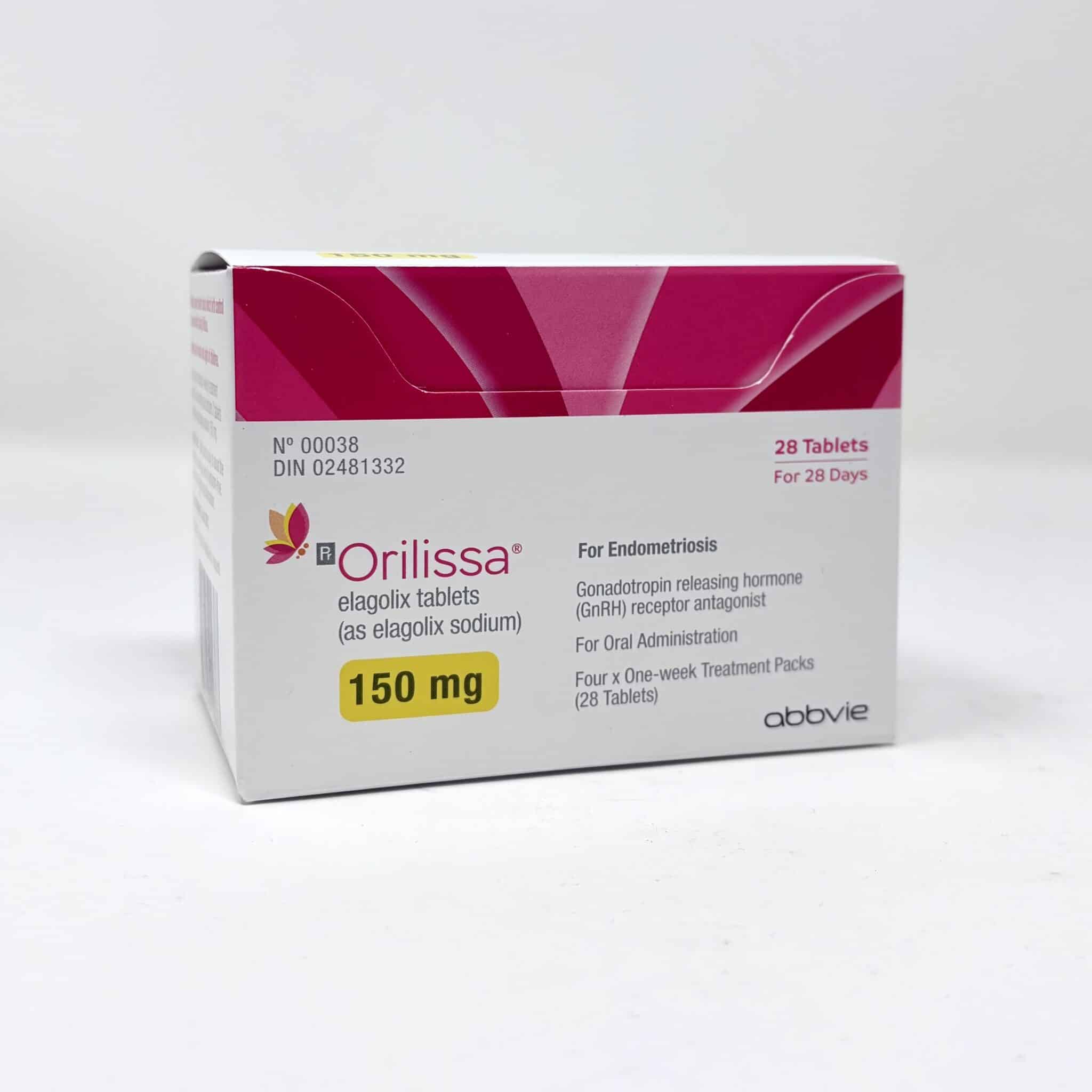Is Orilissa a Better Option for Women Who Can’t Take Estrogen?
Is Orilissa a Better Option for Women Who Can’t Take Estrogen?
- Jason K
For many women suffering from endometriosis, hormonal treatments such as birth control pills, hormone replacement therapy, or GnRH agonists like Lupron are commonly prescribed. However, not all women can safely take estrogen-based medications due to health risks or intolerances. This is where Orilissa (elagolix) becomes a valuable alternative.
This article explores why some women must avoid estrogen-based treatments, how Orilissa compares to other options, and who may benefit most from this medication.
Why Some Women Need to Avoid Estrogen-Based Treatments
Estrogen-containing medications can pose serious health risks for some patients, including those with:
A history of blood clots (DVT, PE) or a family history of clotting disorders.
Migraines with aura, which can increase stroke risk when taking estrogen.
Hormone-sensitive conditions, such as a history of breast cancer or endometrial cancer.
High blood pressure or cardiovascular disease, which can worsen with estrogen-based therapies.
Severe mood swings, nausea, or other side effects from estrogen-containing medications.
For these individuals, non-estrogen alternatives like Orilissa may be a safer option for managing endometriosis pain without increasing health risks.
How Orilissa Works Without Estrogen
Orilissa is a GnRH antagonist, meaning it reduces estrogen levels without eliminating them completely.
Unlike GnRH agonists (e.g., Lupron, Synarel, Zoladex), which initially increase estrogen before suppressing it, Orilissa works faster without causing a temporary estrogen surge.
The adjustable dosing (150 mg daily vs. 200 mg twice daily) allows patients to find a balance between symptom relief and side effect management.
How Orilissa Compares to Other Endometriosis Treatments
Unlike birth control pills, which contain estrogen and progestin, Orilissa does not introduce additional hormones into the body. Instead, it reduces estrogen levels by blocking GnRH receptors, making it a better choice for women who cannot tolerate estrogen therapy.
Compared to GnRH agonists like Lupron, Orilissa works faster and does not cause an initial estrogen surge that can temporarily worsen symptoms. Additionally, Lupron requires injections, whereas Orilissa is taken as a daily pill, making it a more convenient option for many patients.
Another alternative to estrogen-based treatments is progestin-only therapy, such as Aygestin (norethindrone) or the Mirena IUD. These medications work by thinning the uterine lining and suppressing ovulation, but they do not lower estrogen levels as effectively as Orilissa. Patients who require stronger estrogen suppression may find Orilissa more beneficial.
Other Non-Estrogen Alternatives for Endometriosis
For women who cannot take estrogen but need alternative treatments, there are a few other non-estrogen options available:
1. Progestin-Only Therapies
Examples: Norethindrone (Aygestin), Depo-Provera (medroxyprogesterone), Mirena IUD (levonorgestrel).
How They Work: Progestin-only medications suppress ovulation and thin the endometrial lining, reducing pain and bleeding.
Pros: Suitable for patients who cannot tolerate estrogen; can be used long-term.
Cons: May cause irregular bleeding, mood changes, and weight gain.
2. GnRH Agonists
Examples: Lupron Depot (leuprolide), Zoladex (goserelin), Synarel (nafarelin).
How They Work: GnRH agonists create an artificial menopause, dramatically reducing estrogen levels and stopping endometriosis progression.
Pros: Highly effective for severe endometriosis symptoms.
Cons: Initial hormone surge can worsen symptoms before relief occurs; requires “add-back” therapy to minimize bone loss.
3. NSAIDs and Pain Management
Examples: Ibuprofen, naproxen, diclofenac.
How They Work: Reduce inflammation and cramping associated with endometriosis.
Pros: Can be used with other treatments for additional pain relief.
Cons: Does not treat the underlying condition, only manages symptoms.
Who Might Benefit Most from Orilissa?
Orilissa may be a better alternative for:
Women who cannot take birth control due to clotting risks.
Patients with hormone-sensitive conditions who need to lower estrogen levels.
Those who experience severe side effects from hormonal birth control but still need endometriosis treatment.
Patients looking for a fast-acting, oral option without injections.
Side Effects and Considerations
Orilissa can cause hot flashes, mood changes, and reduced bone density, but the lower 150 mg dose reduces these risks.
Unlike estrogen-based therapies, it does not carry a risk of clot formation.
Long-term use (beyond 24 months) requires careful monitoring of bone health.
Final Thoughts: Is Orilissa the Right Choice?
For women who cannot take estrogen, Orilissa offers an effective, non-estrogen-based alternative for managing moderate to severe endometriosis pain. Patients should discuss their medical history, risk factors, and side effects with their doctor to determine if Orilissa is a better fit for their treatment plan.
Reference:
A Clinician’s Guide to the Treatment of Endometriosis with Elagolix


